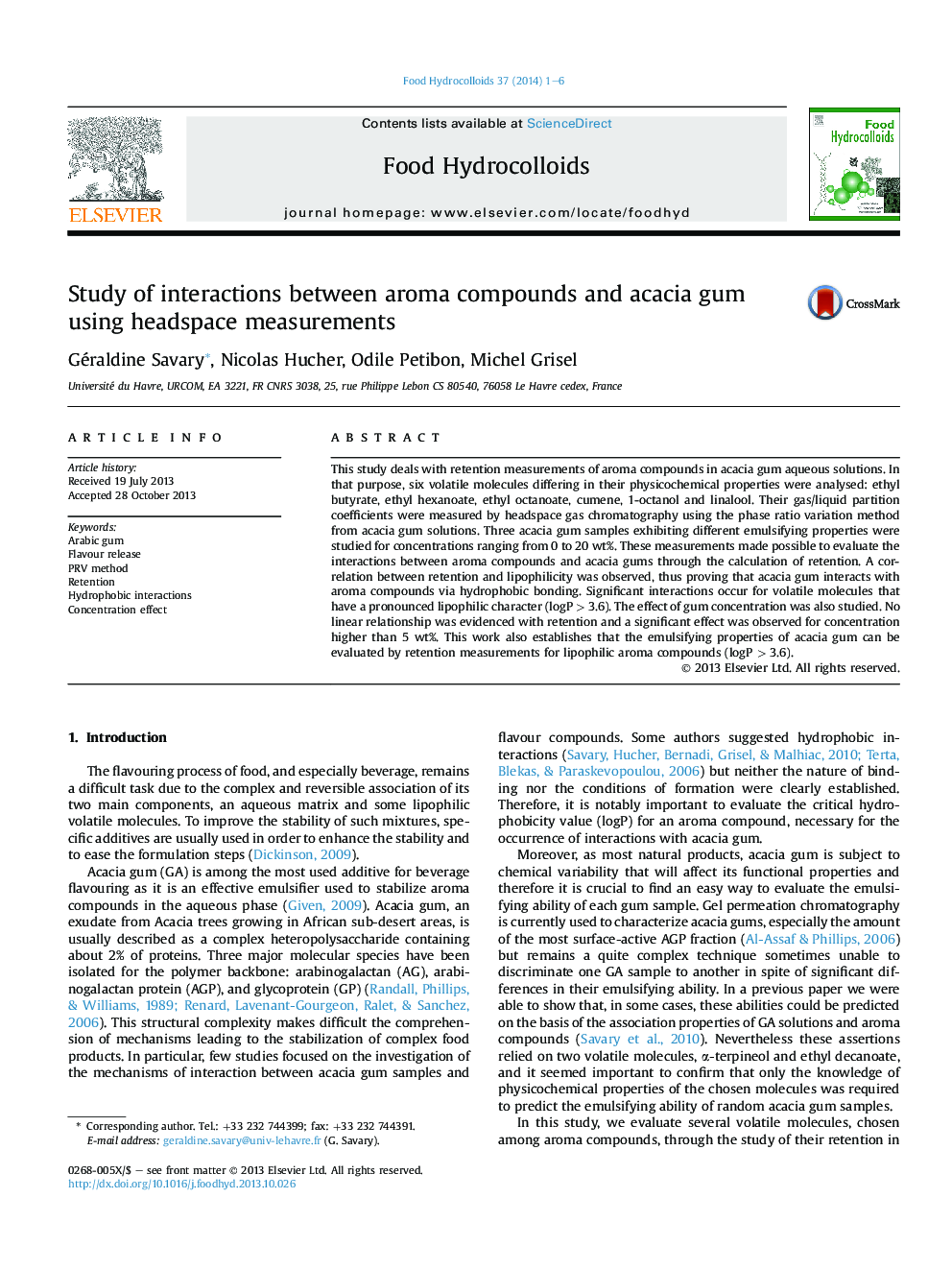| کد مقاله | کد نشریه | سال انتشار | مقاله انگلیسی | نسخه تمام متن |
|---|---|---|---|---|
| 605146 | 1454438 | 2014 | 6 صفحه PDF | دانلود رایگان |
• Acacia gum retains aroma compounds mainly through hydrophobic interactions.
• Only compounds with logP > 3.6 are significantly retained in acacia gum solution.
• Retention appears when acacia gum concentration is above 5 wt% in aqueous solution.
• It is possible to evaluate the emulsifying properties of gum using flavour release.
This study deals with retention measurements of aroma compounds in acacia gum aqueous solutions. In that purpose, six volatile molecules differing in their physicochemical properties were analysed: ethyl butyrate, ethyl hexanoate, ethyl octanoate, cumene, 1-octanol and linalool. Their gas/liquid partition coefficients were measured by headspace gas chromatography using the phase ratio variation method from acacia gum solutions. Three acacia gum samples exhibiting different emulsifying properties were studied for concentrations ranging from 0 to 20 wt%. These measurements made possible to evaluate the interactions between aroma compounds and acacia gums through the calculation of retention. A correlation between retention and lipophilicity was observed, thus proving that acacia gum interacts with aroma compounds via hydrophobic bonding. Significant interactions occur for volatile molecules that have a pronounced lipophilic character (logP > 3.6). The effect of gum concentration was also studied. No linear relationship was evidenced with retention and a significant effect was observed for concentration higher than 5 wt%. This work also establishes that the emulsifying properties of acacia gum can be evaluated by retention measurements for lipophilic aroma compounds (logP > 3.6).
Figure optionsDownload as PowerPoint slide
Journal: Food Hydrocolloids - Volume 37, June 2014, Pages 1–6
